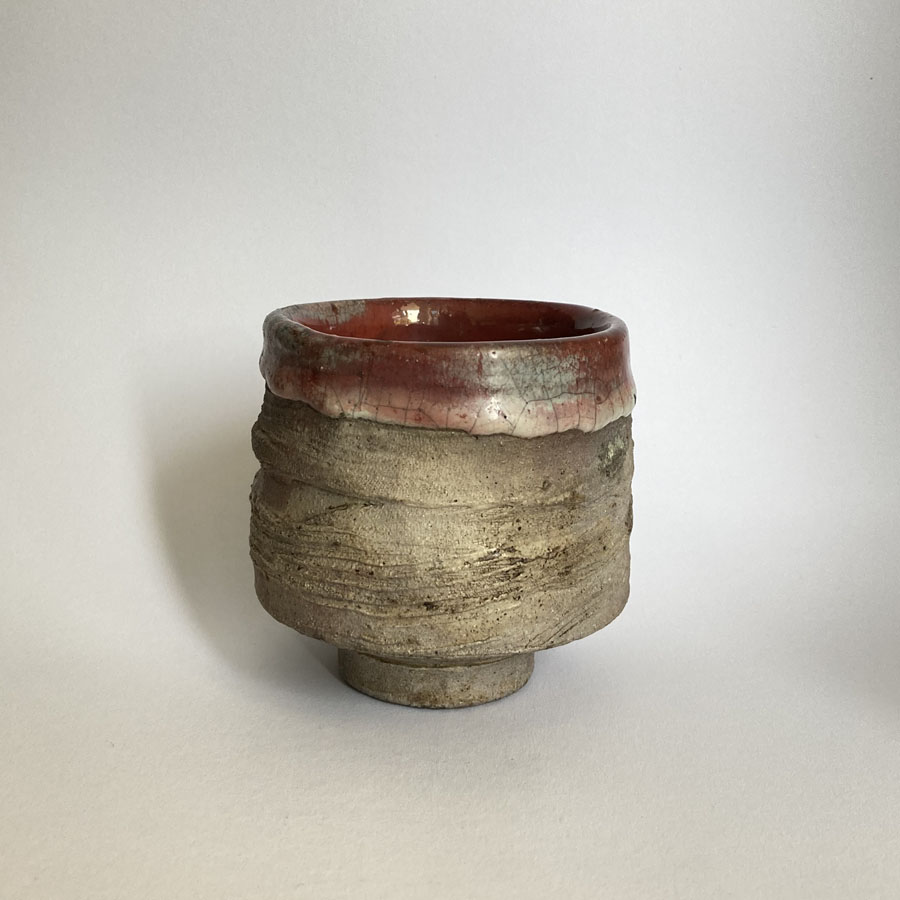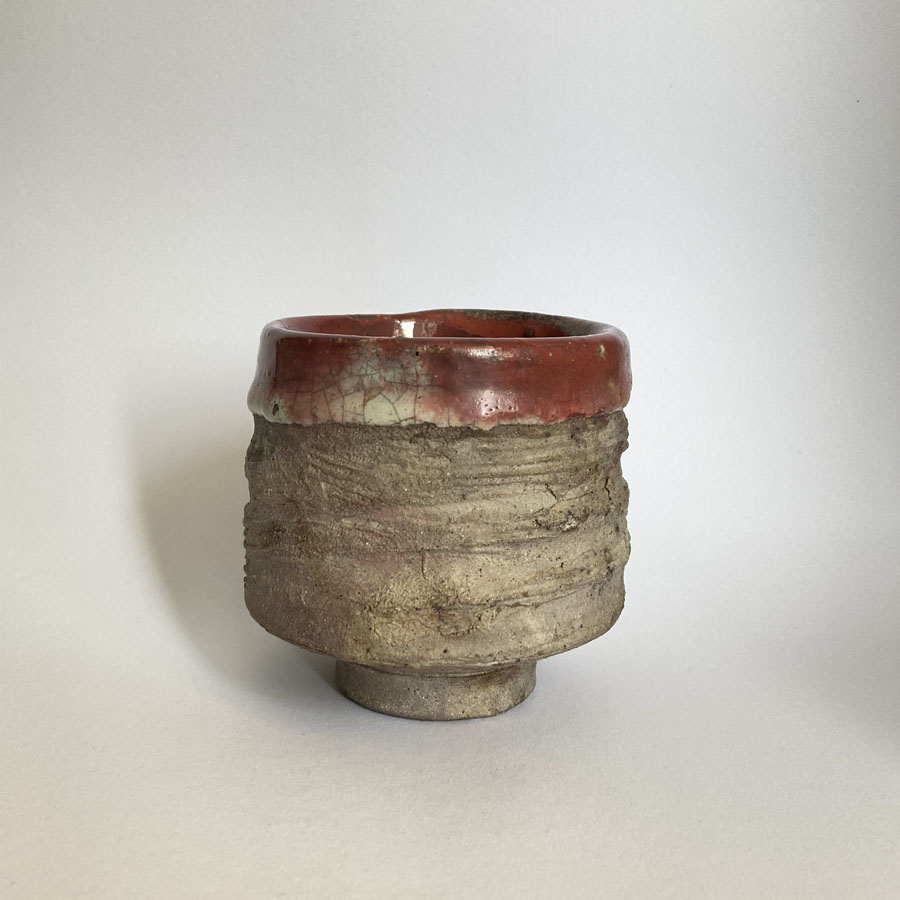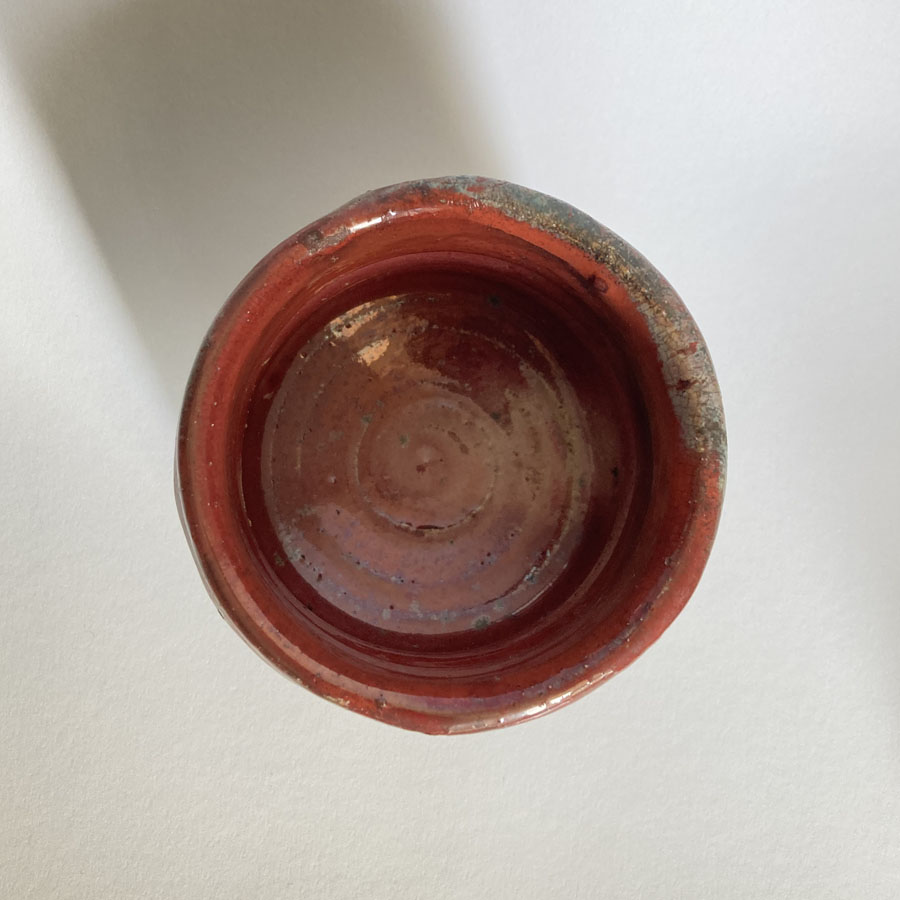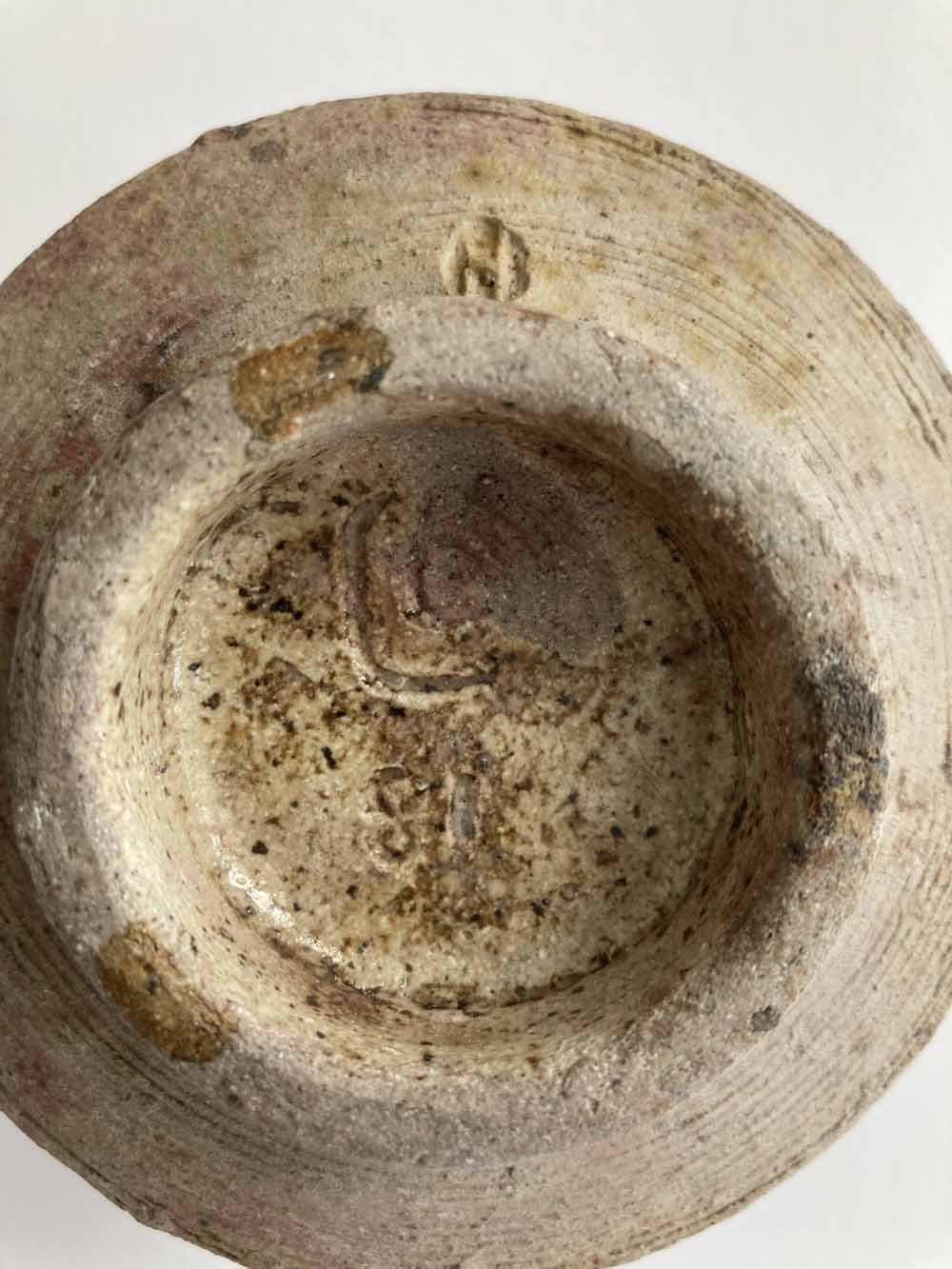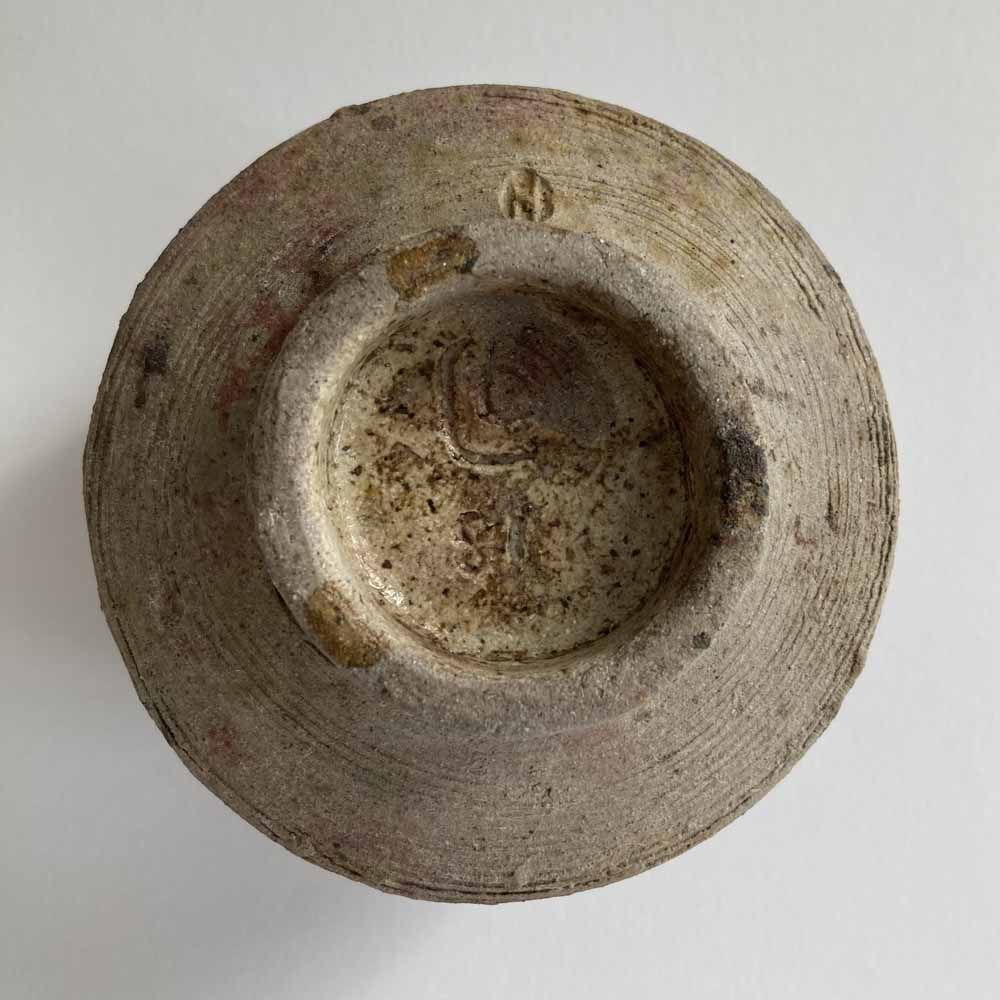Description
Type: Studio Pottery
Design: Ernst Häusermann (* 1947)
Carrying out: Ernst Häusermann (* 1947)
Object: chawan
Dimensions: height: 10 cm, width: 10.2 cm
Shard: gray
Surface: gray, yellow, red, celadon
Manufacture year: 1981
Condition: undamaged
Signature: E in a circle and year below (81)
Mark: H in a circle
Details:
To find a studio ceramics from the Swiss studio potter Ernst Häusermann is very rare. However, Ernst Häusermann is not only a ceramist, but also a sculptor and object artist. There is also art by him in public space.
The Chawan shown here reflects the skills of this extraordinary artist and convinces not only by the beautiful glaze play, but also especially by the structure that Häusermann has given the unglazed surfaces. Through the sculptural structure, the sculptor completely comes through. The sculptural side of this studio ceramic is complemented by the floating graceful body on a slender base.
What is also fascinating about this Ernst Häusermann ceramic is that the chawan has many different faces, as both the glaze and unglazed surfaces have completely different shades depending on the angle of view. Each side of this studio ceramic thus has its own unique characteristics; depending on how the piece is positioned, you get several works of art in one.
For Ernst Häusermann, a work should have different levels of thought or be ambiguous anyway:
“Whereas in the case of vessel ceramics, the inhibition threshold for being able to grasp something ambiguously or on different levels is the purpose of use. The fact that you know that this is a vase or something similar, that it has a cavity, a hole, that it is watertight and you can fill it with water to put flowers in it, or that you can eat something out of a bowl – you actually already have the explanation for what the thing is there for. In this sense, it is almost more complicated to find the access to vessels than to objects, especially if you want to put more than the purpose into it. With a free object, there is no temptation to say: I could use this as a bowl or a paperweight or anything. With a vase, or with a vessel in general, the explanation is actually already in the form. Therefore it is difficult to go deeper into the content of such vessels, since one knows the purpose. It goes into the philosophical, and it becomes extremely difficult to talk about it…” [1]




